We started using Better Chinese materials in the middle of last school year. Previous to that I tried Rosetta Stone Mandarin for 3 years, but it wasn’t working well. I started exposing my children to Mandarin when they were preschool age. After waffling back and forth between different programs I decided to purchase Better Chinese My First Chinese Reader curriculum. I had read some good things about it so I purchased a teacher’s manual, a textbook, a CD-ROM of the lessons, and two sets of workbooks. We took things slow last school year, but within the first month I saw more progress than I did through our time with Rosetta Stone.
My boys have separate lessons since one child needs a quicker pace than the other one, but they are both using the same program. The teacher’s manual is available in English. I couldn’t use this program without it. The regular lessons on the CD-ROM are all in Mandarin so if you don’t speak Mandarin you need the teacher’s guide in English. It is also available in Mandarin. The teacher’s guide is obviously designed for a classroom setting, but there are some great ideas in it that can be incorporated in a homeschool.
This is the teacher’s guide I am using for My First Chinese Reader Volume 1.
Here is another example of the types of activities you can find in the teacher’s manual. It lists online resources you can use with each lesson too. Shortly after we started My First Chinese Reader I decided to purchase an online subscription to the lessons which contain homework practice, a story, a song, and more. It is only $25 for 6 months and I use it all the time now. If I had it to do over again I would pass on purchasing the CD-ROM and just go for the online lessons. The main lesson content is the same, but the online subscription has more. The homework is a set of 20 multiple-choice questions online that they grade for you. It covers grammar and reading related to the lesson.
I haven’t found the two workbooks (A and B) to be particularly helpful, but they do contain a few pages to go with each lesson. Workbook A has character cards that we use all the time though. They are on perforated cardstock in the back of the workbook.
Here is an example of a portion of the lesson. This can be found through the online subscription or through the CD-ROM. A little bubble with characters and pinyin appears as the child talks. Once one child talks you need to push a button to repeat or continue or go back. Here the little boy is asking “how are you?” and the little girl says “I am fine, thank you.” As your child goes to further lessons the characters that were learned in previous lessons no longer have the pinyin above the character.
At the end of the lesson there is a demonstration of how to draw a select number of characters for that lesson. So far they have taught 3-5 characters per lesson. For each character the child needs to learn the correct stroke order. The stroke order is animated on the lesson.

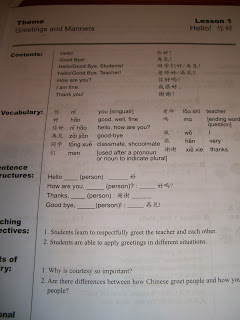
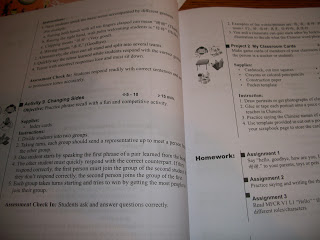

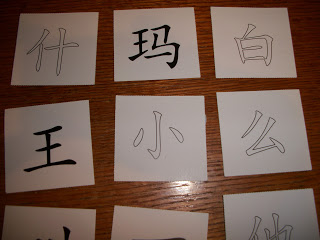
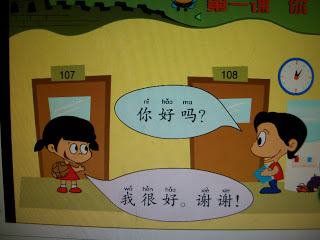


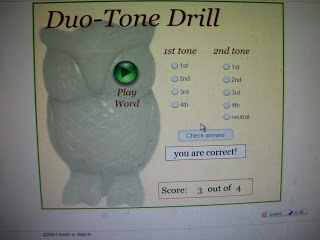
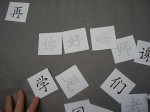
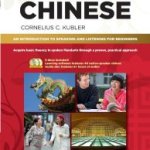
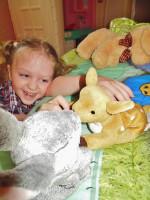
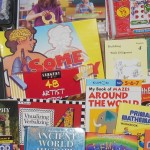
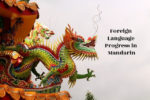
Thank you for your review. I’ve been looking into BetterChinese.com for a while now and I think your review just clinched the deal for me. We, too, used Rosetta Stone at our homeschool, but my son grew so resistant to it, we quit it. We’ve been just doing some games in the iPad and reading “Get Talking Chinese”, an excellent book I got at amazon, but it’s not an actual program for learning, it’s rather a supplement.
Just curious to see if you’re still using BetterChinese products now that it’s been a while since you wrote this review.
Thank you so much!
Hi Patricia! I’ve found a curriculum to be a big help. Supplements can get you started, but my lack of knowledge of Chinese requires me to have a formal course of study. I found Better Chinese to be great to help my children’s reading skills. It wasn’t the best for conversation. Maybe it was how I used it through. I am using New Practical Chinese Reader now and we are occasionally meeting with a tutor to practice conversation and help with pronunciation. The New Practical Chinese Reader includes grammar as well as phonetic practice. I needed to supplement Better Chinese with tone practice, but the NPCR includes that. I hope that helps. Here is a recent post about what we are doing: http://eclectic-homeschool.blogspot.ca/2013/08/learning-mandarin-chinese-in-homeschool.html
This comment has been removed by a blog administrator.
Hello Dude,
Mandarin is the national language of Chinese is the most widely spoken language in the world. More than one billion of the world’s population are Chinese speakers. The Chinese population is already one fifth of the population of the world and is rapidly expanding its presence everywhere. Thanks a lot.
I’m so glad that you’re enjoying the Better Chinese curriculum. We are always looking for feedback from the homeschooling community. Look forward to reading more about how you’re teaching Mandarin to your children. I have a 4 year old and we’re going through the My First Chinese Words series right now which he really likes.